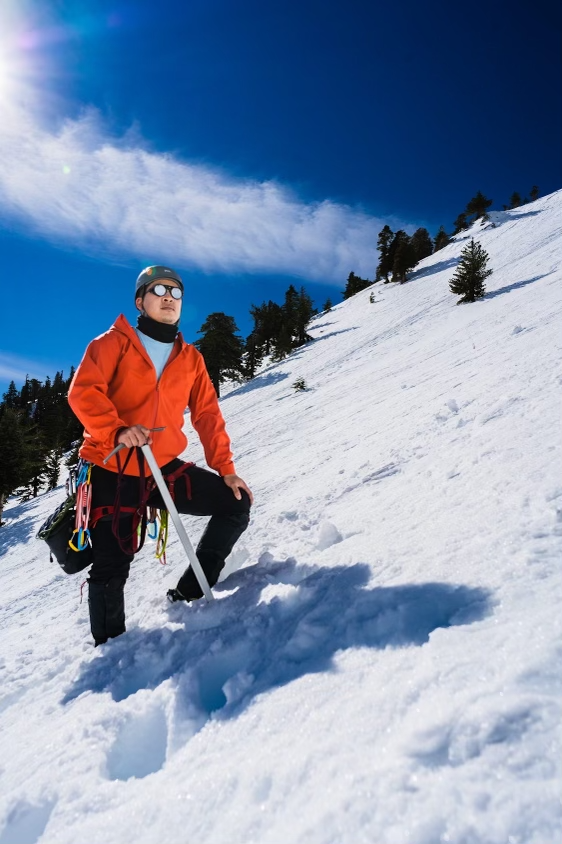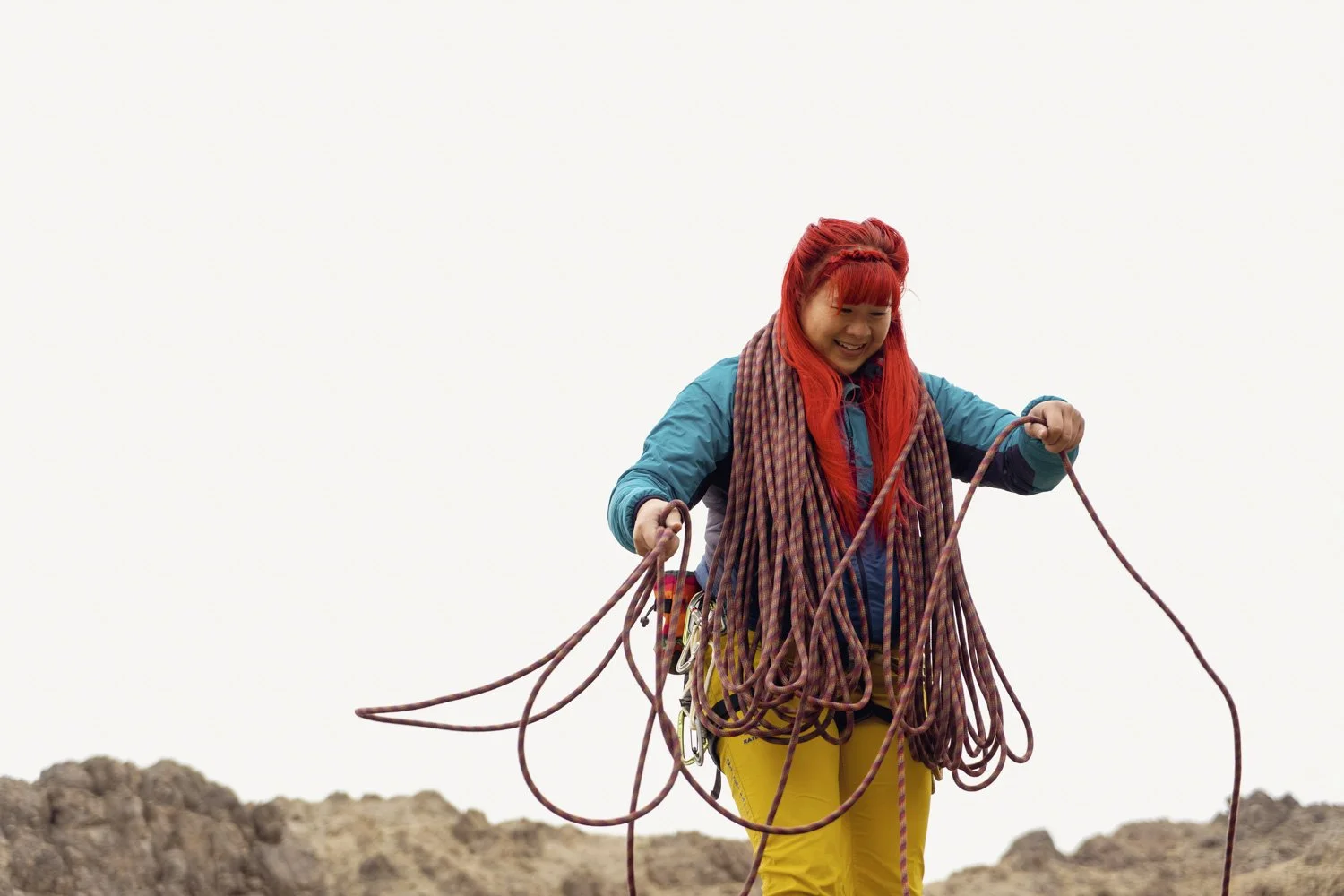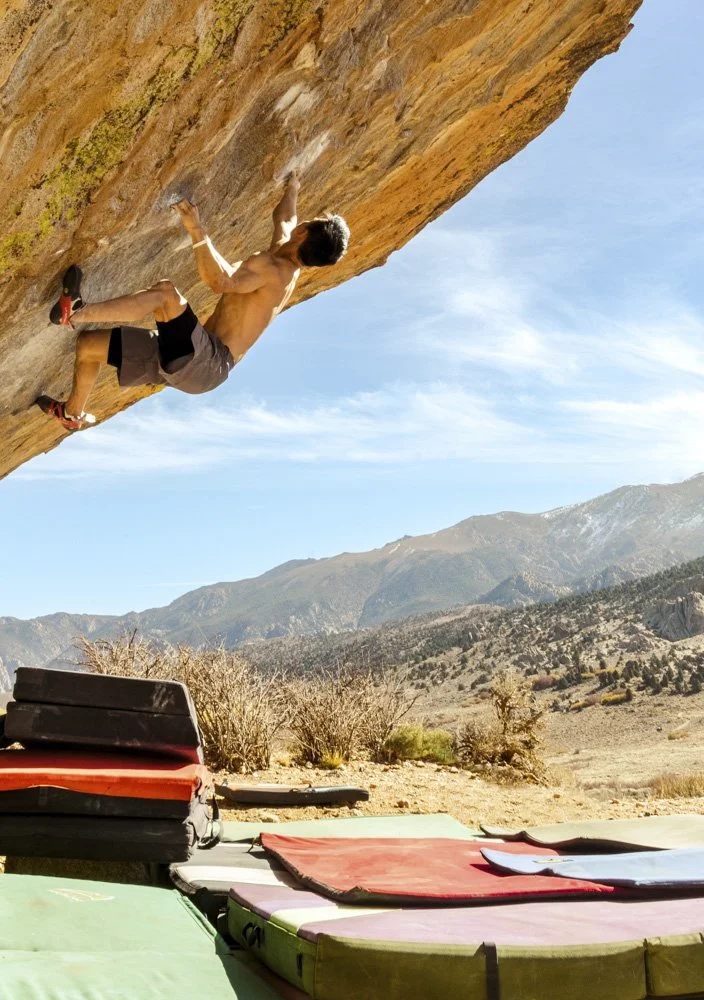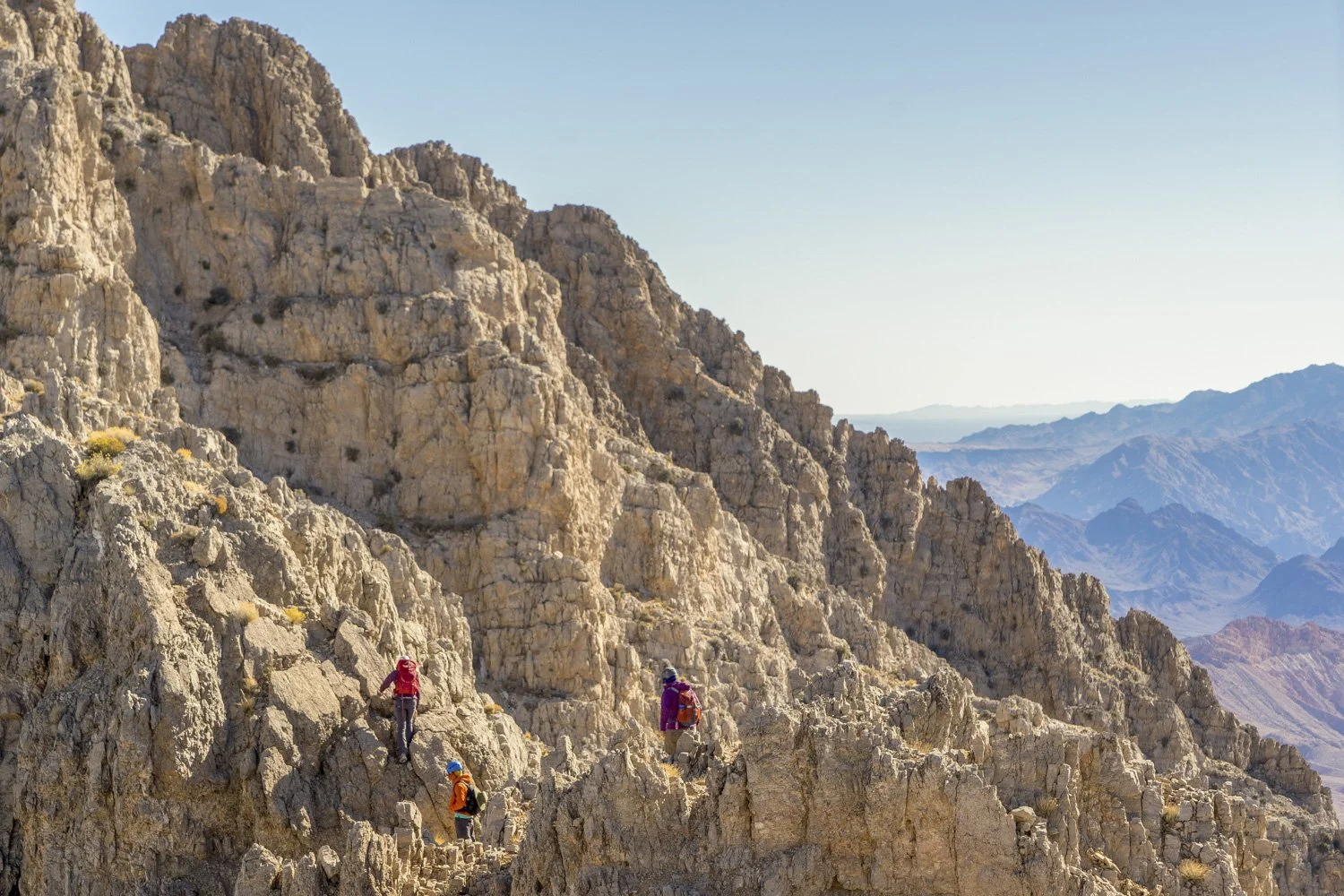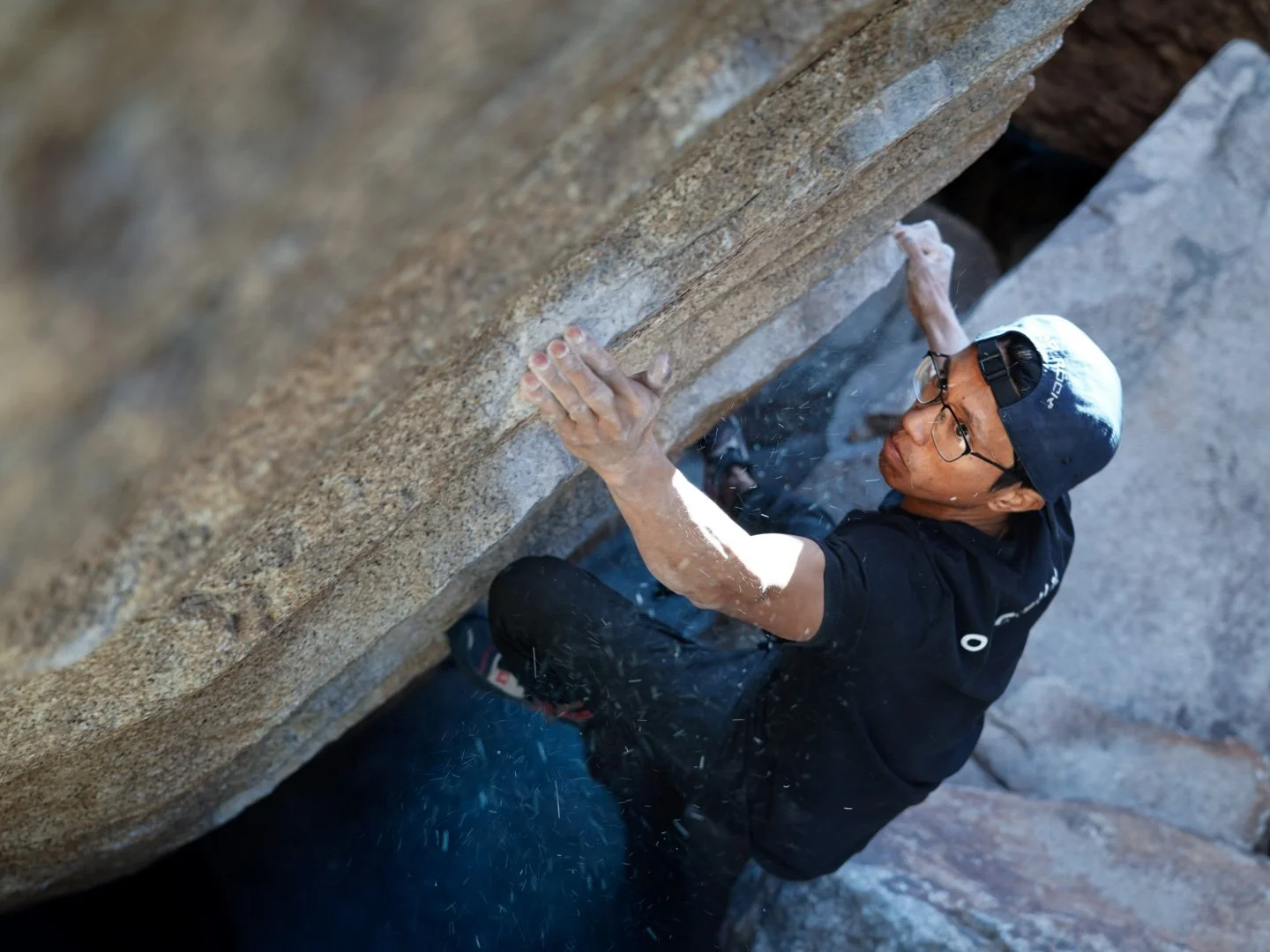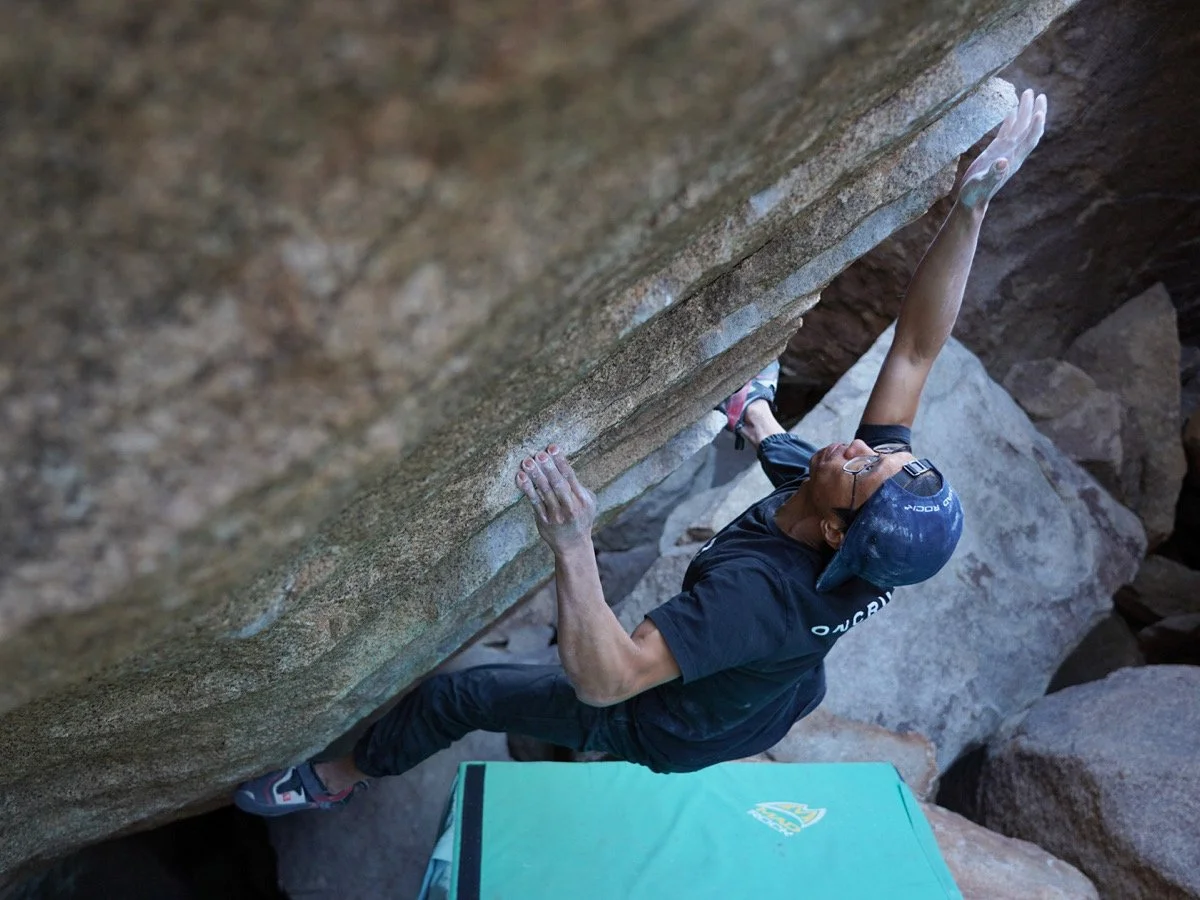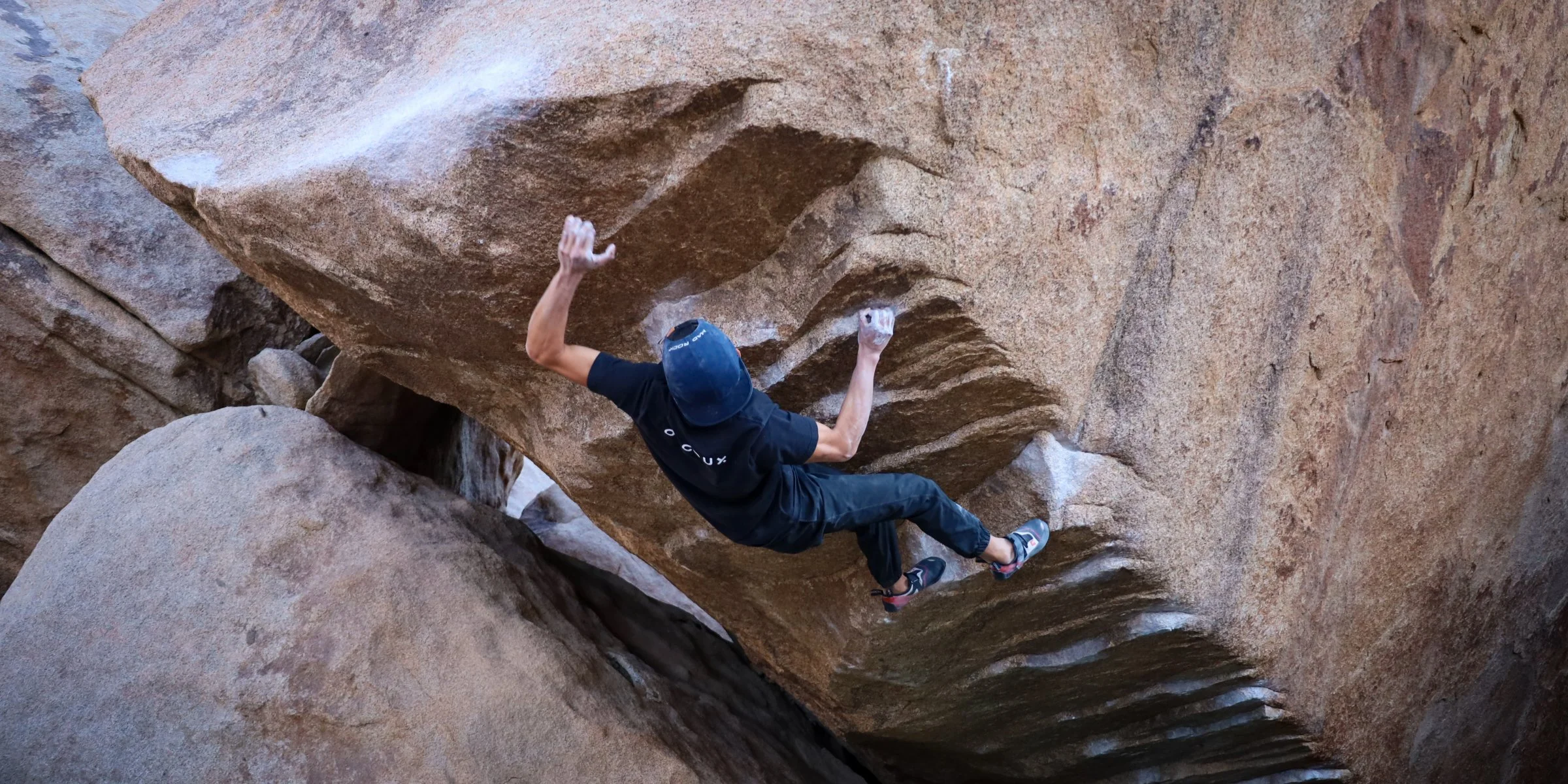Asian American Voices: Jason Quan
He says that “from his years of going outside, I don’t see as much diversity as I’d like.” As a result, he’s taken matters into his own hands, working with organizations such Climb the Gap, and the Queer Climbing Collective.
Adventure Photographer and Content Creator
by Katherine Ku and Matt Levy
Jason’s story is the third in the Asian American voices series. He is a Southern California based rock climber and photographer who often collaborates with affinity groups to promote diversity and inclusivity in our sport.
Jason started off as an internet friend I met on Facebook, but pretty soon after exchanging our first messages, we decided to meet up to climb together. (Because meeting up with strangers from the internet is something that's ok to do now right?) Anyway, I remember thinking that he must be a natural mentor, because soon after, I trusted him enough to teach me how to rappel off the edge of Corpse Wall. A few months after that, he taught me to trad climb in Ojai, pointing out the flaws in my placements and teaching me how to make my own tape crack gloves. A few months after that, we solo’d Tenaya Peak’s Northwest Buttress with another friend.
Jason is someone who chases sunrises and is actually on time (or even early) for alpine starts. He loves a good hex placement and aesthetic routes with a good view all the way up. He’s also the one of the only other Asian American adventure content creators I actually know. When we think of acclaimed Asian American adventure filmmakers and photographers, names like Jimmy Chin, Irene Yee (aka Lady Lockoff), and Matty Hong come to mind. Jason, though, is on a journey as a content creator, navigating a world that loves adventure media and an increasingly saturated media landscape.
Funny enough, Jason told me he actually started getting into outdoor sports to impress a girl who wanted to go snow camping. That relationship didn’t last, but his love for the outdoors did. He became an avid mountaineer and, eventually, a rock climber when his brother needed a belay partner about five years ago. His interest in photography bloomed even earlier, as he started capturing and sharing images from his travels.
Since then, climbing has become his way of detoxing mentally and the outdoor space has become a setting for him to both “think for himself and connect with other people.” And he’s definitely been successful at connecting with others.
Jason has come a long way from just teaching gumbies (like myself) how not to hurt themselves outside. He admits that he is “naturally inclined to mentorship,” and stresses the importance of promoting diversity in both rock climbing and photography. Currently, he is one of six mentees in Climbing for All, a program for BIPOC climbing photographers jointly hosted by Climbing Magazine and Adidas. As part of this program, he is working closely with Irene Yee, an adventure photographer and champion for women, BIPOC athletes, and LGBTQ communities.
It’s no secret to Jason that as residents of Southern California, we live in a bubble with higher than average levels of diversity. He says that “from his years of going outside, I don’t see as much diversity as I’d like.” As a result, he’s taken matters into his own hands, working with organizations such Climb the Gap, and the Queer Climbing Collective. And he doesn’t want to stop here - he wants to keep connecting with people like him and aims to become a National Geographic photographer, which he sees as the gold standard of photography.
For now, he wants to continue to help people “mesh together” and bring together people with similar goals. Jason gains a “greater sense of fulfillment…helping someone else achieve their goals,” rather than directly getting something out of it for himself. He also continues to face a struggle modern content creators know all too well - self-promoting from the ground up and continuing to learn as media trends and consumer demands rapidly evolve.
Check out some of Jason’s work in the gallery below. To keep up with him and support him, follow him on Instagram and visit his online portfolio!



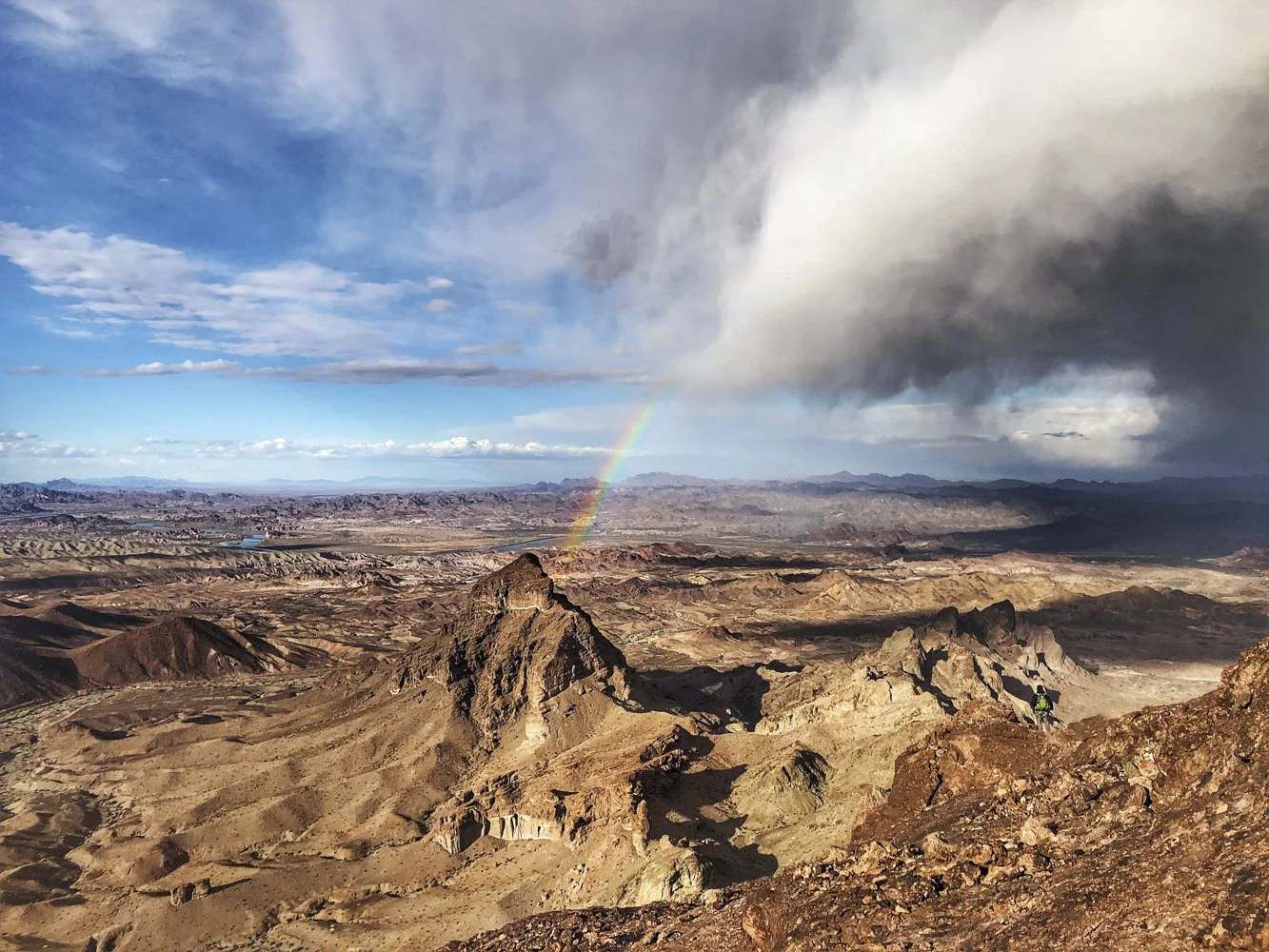








Asian American Voices: Robby Ondevilla
For Robby, it’s been “rewarding to see that people are so willing to reach out when they’re traveling,” to connect with SAC locals in a given area. “It’s important to have diversity among the rock climbing community, treat each other with the utmost respect, and lift each other up.”
Physical Therapist & Subtle Asian Climbing Administrator
by Katherine Ku and Matt Levy
Robby’s story is the second in the Asian American voices series. He, along with the Subtle Asian Climbing team, are pushing to increase diversity in rock climbing by growing an online community and by connecting AAPI climbers all over the world.
Subtle Asian Climbing started out as an offshoot of Subtle Asian Traits (SAT), a Facebook Group founded in September of 2018 that rapidly grew to become one of the largest online Asian communities in the world. SAT, a sort of embodiment of the Asian experience in the West, now has around 2 million members, and is a phenomenon that has been covered by the likes of the New York Times.
As an Asian American, I’m a member of SAT as well as a number of its subgroups, such as Subtle Asian Dating (SAD) and Subtle Asian Cooking. At first glance, these groups are just filled with lighthearted, even silly, content such as memes and everyday anecdotes. However, you’ll quickly realize these posts are extremely relatable and incredibly good at succinctly describing specific experiences of hundreds of thousands of people.
Subtle Asian Climbing (SAC) also serves this purpose, bringing together Asian rock climbers from all over the world via memes and posts highlighting members of the community. I remember watching members participate in the #dynochallenge when i first joined, scrolling through posts of people catching holds from crazy jumps. Today, SAC is over 4,600 members strong, and has grown beyond an online presence into the real world, hosting in-person meet-ups both in gyms and outdoors.
To better understand the growth behind SAC, I sat down with my friend Robby Ondevilla, who is currently an admin on the SAC Facebook page and manages the SAC Instagram account. Robby is also a rock climber of 2.5 years and physical therapist based out of New Jersey. He is thoughtful and well-spoken, considering each of my questions carefully before answering.
Robby’s climbing career started when his brother approached him with a 2-for-1 special at New Jersey Rock Gym. Like me, he was a member of several Subtle Asian groups, including SAC, where he “lurked around for a little bit,” eventually posting more frequently, looking for advice as a newer climber. His role in SAC also grew when he made a suggestion to start an Instagram page to accompany the Facebook group, and was subsequently enlisted to create and run the account.
What started out as a mere spin-off of a larger trend, has since evolved into something much more. SAC has become almost an independent affinity group, a “safe space for a lot of us with the same values.” Especially during the height of the pandemic, it became clear that the value of SAC lies in its ability to bring together individuals who are not only passionate about rock climbing, but have also had similar experiences along the way. Robby himself has encountered some uncomfortable situations as an Asian American climber. He finds himself hesitant to visit nearby crags like Haycock Mountain in Pennsylvania, as “it isn’t the most diverse area.” Other times, he finds that his “choice of place to go climb and hike” are influenced by the possibility of being the only POC, especially in rural areas where there may be safety concerns. As a BIPOC climber, it’s easy to question whether this unease is all mental, but Robby is pushing for SAC to play a larger role in validating and addressing concerns regarding diversity and safety in the outdoors.
Furthermore, Robby and the rest of the SAC team have been instrumental in helping people meet both digitally and physically. While they continue to work to create more clear cut guidelines for planning and coordinating meetups, SAC has successfully hosted meetups all over the country, from Brooklyn Boulders in NYC to Red Rock in Las Vegas. For Robby, it’s been “rewarding to see that people are so willing to reach out when they’re traveling,” to connect with SAC locals in a given area. “It’s important to have diversity among the rock climbing community, treat each other with the utmost respect, and lift each other up.”
It’s clear that Robby has played a huge role in making the SAC community the safe space it is today, as he describes how much he loves watching people connect and create lasting bonds. Many of the current SAC leaders may not work full time in the rock climbing industry, yet the future of the group is full of potential. Robby confesses it’s “hard at times to keep up with how fast SAC is growing,” but “loves how it is currently thriving.” Despite his mellow composure, Robby speaks with certainty when he expresses his excitement for SAC’s future and that he and the core team “will give it all they got.”
Rail Shark: The soon-to-be classic of elite Joshua Tree bouldering
So who or what is a Rail Shark? If you ask FA Jeremy Schoenborn, the answer is quite simple. Rail Shark is a soon-to-be classic bloc that is “second to none in Joshua Tree.”
by Matt Levy and Katherine Ku
If you’re a regular consumer of climbing media, you may have heard an interesting problem name pop up more and more frequently in the last few months: Rail Shark.
So who or what is a Rail Shark? If you ask FA Jeremy Schoenborn, the answer is quite simple. Rail Shark is a soon-to-be classic bloc that is “second to none in Joshua Tree.”
Schoenborn immediately saw potential in the overhanging face with blocky rails lining the underside, saying it was “certainly climbable” but that he “seriously doubted it was any easier than V14.” So Schoenborn got to work cleaning and projecting. By the end of last year's winter season, Schoenborn had snagged the FA, setting the stage for a second ascent by Joe Maier, a third by Jordan Mathew, and a fourth by none other than Ethan Pringle, who famously flashed the “ultra-classic Moonlight Buttress.” Jeremy Schoenborn is not the only boulderer on the Joshua Tree circuit to give high praise to Rail Shark.
Despite the unseasonably warm weather in December and hardly adequate crashpad coverage, Mathew was able to put down the boulder on his first Joshua Tree trip of the season. He was impressed by the bloc, saying that Rail Shark had “everything [he] looks for in a rock climb”— “committing,” “proud,” and “full-value from start to finish, all the way to the mantle.” It’s not everyday you run into a boulder that earns its full five stars in both movement and aesthetics.
Just before Christmas, Pringle hiked out to Rail Shark with his crew and found that the boulder wouldn’t go down as easily as he hoped. After figuring out the tricky crux sequence and a battle with sweaty hands, he was surprised to finish off the boulder with “one hail-mary effort from the sit start.” Pringle, too, praised Rail Shark, calling it an “epic find” and “as mega as they come.” In our conversation with him, he confirmed that it was a “true standout,” calling Schoenborn’s discovery a “world class-contribution.”
My team and I drove out to the desert, cameras and crag snacks in tow. We weaved our way through the talus field and squeezed bodies and pads through little tunnels in the formation, moving upward to find this new boulder everybody was talking about. Before long, we all had the same question— how the hell did Jeremy find this thing?
To hear Schoenborn tell it, he had been at the top of the famous sport line “New World Order” when he looked down into the talus field and saw several boulders he wanted to check up on. “One boulder led to the next and the Rail Shark appeared as soon as I turned the right corner.” And it’s true. As one approaches the Shark, every other formation falls away and leaves you staring, entranced, into Rail Shark’s great, dark maw. Mercene described his first time finding the Shark, saying “It’s rad when you come out of the talus and The Shark appears. It was like back in the day when you play Pokémon on your Gameboy and the rare Pokémon finally comes up.”
But just how rare a creature is Rail Shark?
Joshua Tree is among the most heavily trafficked bouldering spots in Southern California, and more often than not you’ll find droves of climbers gathered around classic lines put up starting in the 60s. Though there are over 1,200 established and recorded problems, climbers like Mathew see Rail Shark as a reminder of the “vast potential” of Joshua Tree. Five-stars lines are still out there - “you just have to be willing to hunt for them.” Just take a cue from Jeremy Schoenborn, who knows that even in our very own roarin’ ‘20s, the next area classic could be just an adventurous scramble away.


